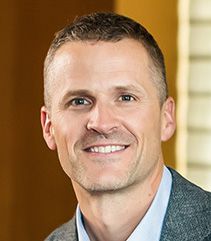The signs of the workforce shortage in South Dakota are as omnipresent as they are ominous.
“Now hiring” signs on nearly every business. Fast-food restaurants with shuttered dining rooms. Delayed building construction. Long wait times for consumer goods and services. And a nursing shortage that in mid-December led Monument Health group to announce the closure of its nursing home in Custer, S.D.
Several factors are playing into the high need for workers and the desire of unemployed people to refrain from entering the workforce. But one of the key drivers of the workforce problem is a lack of accessible, reliable and affordable child care across the state.
On a most basic level, the child care problem boils down to this reality: If working parents are unable to place their children with safe, reliable and affordable daycare providers, many will stop working and stay home to care for their children.
“The lack of reliable, affordable daycare is the number one issue that is affecting our workforce crunch right now,” Sioux Falls Mayor Paul TenHaken said.
In Sioux Falls alone, about 2,000 children of working parents do not have child-care spots available to them, and an estimated 4,000 parents in the city are not in the workforce but could be if they had day care available, according to a recent report by the Sioux Falls Child Care Collaborative.
The daycare shortage is taking place in both urban and rural areas. Seven South Dakota counties have no state-registered daycare providers, and several have only one or two at-home providers. Overall in South Dakota, there are about 73,000 children under age six, but only an estimated 34,500 child-care slots, according to a recent analysis by South Dakota Kids Count, a non-profit data research group.
The child care shortage is particularly challenging for families in South Dakota, where almost 75% of children under age six have both parents working.
On South Dakota Indian reservations, the child care crisis is even more dire. As a result of the closure of federal Head Start early childhood centers due to the pandemic, and with restricted admissions at federally subsidized tribal daycare centers, working parents in reservation communities can face long commutes to drop off children or are forced to leave the workforce to care for their children, further weakening fragile reservation economies.
In some cases, infants and children across South Dakota can suffer emotional or developmental damage from receiving inadequate or inconsistent child care, or from being shuffled about between daycare centers, in-home providers or relatives and friends who are called upon to care for them in a pinch.
In many cases, working parents endure the greatest stress of trying to balance the desire to care for their children and keep them safe with the need to make a living.
“Every single day we have parents calling, frustrated, worried and stressed because they can’t find child care, and it’s not just child care, it’s finding child care they can trust,” said Pigeon Big Crow, director of the Oglala Sioux Tribe child care program.

Across the state, the number of daycare providers had been falling steadily for more than a decade, with registered in-home daycare providers falling by half since 2012, according to Kids Count. Yet closures of child-care providers sped up during the COVID-19 pandemic, as many in-home day cares, nonprofit child-care centers and private, for-profit providers closed due to concerns over spreading the coronavirus, or a lack of workers to care for children, or because they could not turn a profit or even remain viable.
Meanwhile, child-care costs have risen for parents across the state as providers have had to raise rates. While higher costs associated with inflation have been a recent factor, the greatest increase in business costs has come because providers have to raise wages to attract employees in order to compete with other employers amid a worker shortage.
A recent survey by the Sioux Falls collaborative showed the average weekly cost of child care for infants and children in the city was about $200 a week per child, or about $10,400 a year. The report by Kids Count showed that across the state, the average annual cost of day care at a licensed facility was roughly $9,800 a year, equivalent to the annual in-state tuition at the University of South Dakota.
The child care industry in South Dakota is both a cause of the worker shortage and a victim of the inability to hire new employees.
As the overall worker shortage has intensified, child-care providers who paid a median entry-level wage of just over $10 an hour in 2019 have had to raise starting wages to up to $14 an hour in order to compete with other businesses that are increasingly desperate to hire employees. With few if any revenue streams beyond fees paid by parents, child-care providers have had to raise rates in order to remain open.
Rebecca Wimmer, CEO of the Boys & Girls Club of the Sioux Empire, a large nonprofit child care provider in Sioux Falls, said the child care crisis is having a devastating effect on some children and working parents.

In early December, Wimmer sent a letter to Boys & Girls Club clients indicating that child care rates were rising in 2022, though the organization was trying to freeze rates for as many families as possible.
Despite efforts to keep rates low, some families — especially those with lower incomes — will experience hardship due to increased costs for child care, Wimmer said.
“It will be difficult for some families to make ends meet,” Wimmer said. “For the families that are living paycheck-to-paycheck, $20 more a week can be the difference between being able to pay the bills or not pay the bills or to put food on the table or not put food on the table.”
The child care shortage is having widespread ripple effects across the state economy and in communities where daycare slots are in high demand.
“It’s an economic-altering situation for communities, because you’ve got new businesses like Amazon coming to town, and you promise a workforce to these businesses, and if you can’t provide that, how long before those businesses decide not to invest in Sioux Falls or South Dakota?” said Rich Merkouris, pastor of King of Glory Church in Sioux Falls, who sits on two community boards working to expand child-care options.

TenHaken said that while workforce issues are important, expanding the options for high-quality, affordable child care in Sioux Falls and across South Dakota is about enhancing the lives of future generations.
“This is our most important asset, this is our kids we’re taking about,” TenHaken said. “What’s that worth to a society to make sure we’re investing in ensuring these kids get the absolutely top-shelf care when not under their parents’ supervision? It says a lot about us as a society in how you invest in your kids and your youth, and it kind of tells you where your priorities are as a community and as a state.”
Without some new investment or programs to expand access to child care, the situation is likely to worsen before it gets better, Wimmer said.
Wimmer described a troublesome cycle in which daycare providers that must pay more to attract workers must then raise rates for parents, who may then be priced out of the daycare market. Meanwhile, some daycare providers that can’t make a profit or even break even may close, further restricting daycare options for workers and putting parents in nearly impossible situations.
“What do you choose, do you choose closing because you can’t make ends meet, or do you choose to raise your rates for families trying to make ends meet and add more stress to them and possibly have them pull out of the workforce?” Wimmer said. “There doesn’t seem to be a really good win for anybody right now.”
Ultimately, that equation may prevent business and communities from thriving and growing and being able to create more jobs in Sioux Falls and South Dakota.
“If families can’t find or afford child care, they will pull out of the workforce and we’re already at a point where we’re struggling to find workers, not just in child care but in all industries,” she said. “If we have a diminished workforce, how will that impact the rest of the community? If you’re a business coming in, how are you going to find the workforce you need to do the work you have?”

“Every single day we have parents calling, frustrated, worried and stressed because they can’t find child care, and it’s not just child care, it’s finding child care they can trust.” -- Pigeon Big Crow, director of the Oglala Sioux Tribe child care program
Governor proposes funding
The child care crisis has captured the attention of Gov. Kristi Noem, who said in her Dec. 7 state budget address that child-care options decreased in South Dakota during the pandemic and put hardship on working parents who want to remain in the workforce.
“For families who are struggling to make ends meet, day care is the only way they can ensure that they can put food on the table,” Noem said in her budget address.
Noem is proposing to use $100 million in federal money to support existing daycare centers registered with the state and to encourage development of new daycare facilities.
Noem said part of the funding can also be used to encourage employers to open daycare centers for their employees and for scholarships to help students train in child care fields.
“This will allow high-quality child care facilities to open and to expand in the state and also help existing registered facilities to stay open and to continue to provide care,” Noem said.
In a follow-up email to News Watch, Department of Social Services Secretary Laurie Gill said $60 million of the governor’s proposed funding would initially go toward “stabilization grants” to aid existing daycare providers when they apply for state registration. All of the child-care funding, which still needs legislative approval, would be a one-time expenditure of federal funds, Gill said.
In regard to the stabilization grants, Gill wrote, “More child care slots should become available and child care providers should be able to recruit additional employees so parents have more options to choose from.”
Gill said South Dakota has seen 153 registered daycare programs close since March 2020, the vast majority small family providers, many of them in-home programs, though 105 new registered programs started during that period for a net loss of only 44 programs. Overall, state-registered daycare slots for children in South Dakota did not fall extensively in the past year, dropping from 49,094 slots in October 2020 to 48,985 slots in October 2021.
However, since South Dakota does not require daycare providers with 12 or fewer children to register with the state, there is no way to know exactly how many small in-home providers closed during the pandemic. Some experts say that since state registration for small providers is voluntary, many in-home providers choose not to register, and that the number of lost daycare slots is likely far higher than state records indicate.
As of December 2021, the state had 787 registered daycare providers; of those, 364 were family day cares with one to 12 children, 47 were group family day cares with 13-20 children, and 231 were day care centers with 21 or more children. Only about one in six providers offers before or after school programs.
Wimmer said the Boys & Girls Club and other providers always faced challenges in hiring staff, but now find increased competition from other employers before, during and after the pandemic as the state workforce has diminished.
Two years ago, the club was paying entry-level child-care workers about $10 an hour, which was competitive in the local market, Wimmer said. In the past year, she has raised the starting pay to $14 an hour, and even that salary cannot compete with many Sioux Falls employers, including fast-food outlets or Walmart paying upwards of $15-$20 an hour.
“I made zero progress in the last year in trying to compete with for-profit businesses,” she said.
Every time the club raises its employee pay by a dollar an hour, it raises organizational spending by about $200,000 a year, Wimmer said. Right now, the organization is also paying more for food, energy and other costs that have risen due to recent inflation.
“In the past year, we’ve had $1 million in new expenses by raising wages, and we were already in a deficit, so that money has to come from somewhere,” she said.
For a nonprofit like Boys & Girls Clubs, and for most daycare providers who have few if any other revenue sources, those cost increases can be covered only by raising rates for parents who use child-care services, she said.

Lack of child care could slow growth
Sioux Falls Mayor TenHaken said the lack of child care could eventually slow growth in Sioux Falls, as existing and potential employers continue to face a lack of available workforce, which inhibits expansion.
While employers tend to seek information on available workforce and accessibility of housing for employees in Sioux Falls, the lack of child care is a critical component of enabling more parents to enter the workforce, TenHaken said.
“Sometimes the easy part is finding the employee, and the hard part is finding them housing and child-care services and making sure they have reliable transportation,” TenHaken said.
The biggest need for expanded child-care options in Sioux Falls is for parents who make $14 to $20 an hour, which makes up a significant piece of the local labor market, and is about the same wage paid by many other employers in the region. Those working families have a harder time finding affordable child care so they can remain in the workforce, TenHaken said.
The mayor said he was happy to see a new large daycare center, Creators Kids, prepare to open in Sioux Falls. But that center, with a $1,975 monthly fee for each infant and $1,695 monthly fee for each child up to 6 years old, will not provide much help to low- and medium-wage families, TenHaken said.
He said the city may be able to make better use of existing community centers for potential child-care programming, or enter partnerships with nonprofit organizations to expand daycare offerings.

TenHaken said one option to expand daycare offerings is for government to incentivize the growth and expansion of private daycare programs, a suggestion similar to what Gov. Noem has proposed in her grant program. TenHaken said Sioux Falls and other cities can make zoning and permitting laws more conducive to development of new daycare facilities.
Furthermore, TenHaken said daycare workers should be given more respect, both in terms of pay and benefits but also in regard to the field becoming a more attractive career for future employees.
Merkouris, pastor at King of Glory Church, is working on several fronts to expand good-quality daycare options for working parents in the region.
Merkouris is on the board of Compassion Child Care, a nonprofit day care for low-income families, and serves on the board of the Sioux Falls Hope Coalition, which supports efforts to expand preschool options for young children. Both groups are working to improve access to child care in the area.
Efforts to improve access to child care must also center around ensuring that the day care that is available in Sioux Falls is of the highest possible quality, Merkouris said.
“Day care is more than just keeping kids alive…day care is really about child development; you want those children to be developing during those 40 to 50 hours a week,” he said.
“If kids are just watching an iPad all day, it will slow their development and it will hurt the community because children will come to kindergarten less ready to learn.”
Finding child care for infants is particularly difficult, Merkouris said, because infant care is more expensive and not all child-care programs can handle infant care.
The recent Sioux Falls Child Care Collaborative report indicated that two-thirds of child-care providers in the city have a waiting list for children aged 0-2, and three in five providers have a waiting list for children 3-5.
Merkouris said industry data show that many day cares have increased fees by 5% to 20% in Sioux Falls in the past year, mostly to cover increased costs of paying employee salaries, which make up about 80% of the cost of providing child care.
Merkouris said a major challenge in Sioux Falls is to bring child care costs down to the point where lower- and middle-income families can afford the services in order to keep working.
“They’re what we call the ‘gap’ families, those who make too much enough so they don’t qualify for government assistance but don’t make enough to handle the market rate for child care,” he said.
At one point, some larger businesses in Sioux Falls had in-house child care centers for employees, but those centers were closed due to the high cost and complexity of running a successful day care, Merkouris said. He said employers may need to begin providing child-care payments as an employee benefit, similar to health or dental insurance.
Wimmer said one-time government funding, such as from Gov. Noem’s proposal, can create a short-term stabilization of the child care market. But she said long-range partnerships, possibly among child care providers, employers, community groups and government, are likely needed to create a longer-term solution that expands access to child care in South Dakota.
“Child care is absolutely critical for a healthy workforce, and if we don’t figure out this child-care crisis, we’re going to continue to see the stress and the fractures we’re seeing now,” she said.

Widespread impacts of crisis
The child-care shortage has put new pressures on grandparents and other relatives of working parents who are stepping up to care for young children to help keep young families financially stable.
For retirees Marlene and Wayne Slothouber of Sioux Falls, caring for their daughter’s children a few days a week is a challenge but also a blessing.
“It’s not always easy, and it may not be for everyone, but children are a blessing from God, and we feel mutually fortunate to be able to help and spend time with the grandkids when they are young,” said Marlene, 68.
The Slothoubers care for their daughter’s three children a couple of days a week, ensuring the parents can remain employed, save some money and know that their grandchildren are in a loving, supportive, educational environment.
“Especially at a day care, with it not being a familial relationship, you want to find someone who really loves children and who has patience and creativity,” Marlene Slothauber said. “That’s a challenge, and I would not want to have them searching out something like that now because it is getting harder to find.”
During the height of the COVID-19 pandemic in fall 2020, some in-home daycare providers ceased operation, forcing some parents to stay home from work or find other alternatives.
With vaccines available, and COVID-19 cases lower, in-home providers are again open for business and many are back to full capacity.
Lynette Lohan, a state-registered in-home daycare provider in Sioux Falls, said she gets about a call per week from a parent inquiring about potential openings for children. A nearby neighbor waited for two years before Lohan was able to accept her child into her home day care.
Lohan said providing child care can be challenging, but is even more rewarding in terms of helping parents remain at work and providing a nurturing environment for their children.
“I raised my family while doing it, and it’s a good life,” Lohan said. “It’s not an easy job, it’s not easy at all, but it can be good and very rewarding.”

Seeking solutions in a small city
Janel Guse, principal of Madison Elementary School in Madison, S.D., has a relatively young staff of teachers, many of them women, who face challenges in finding child care in the city of about 7,300 people. Right now, there are 10 registered daycare providers in Lake County, nine of them in Madison, and only one sizable daycare center, state data show.
Guse is part of a group of local leaders trying to find ways to encourage development of new daycare programs in the city.
“We’re just hitting a shortage overall, and Madison is a young community and getting younger,” Guse said. “It really has a big impact on the families because we don’t have center-based care, so the availability for spots for families is really limited.”

Guse said finding child care can be even more difficult for factory workers, nurses or others who perform shift work outside the typical 9-5 workday. Also, as more people work later into their lives, fewer relatives are able to provide day care for family members who need it, she said.
Madison has only one child-care provider that offers before- or after-school programs, according to state data.
“If we want our parents to be able to be productive at work, we need high-quality day care that has consistent hours and that is open while they’re working,” Guse said.
Unless more day care is made available, Madison may see its economic growth stunted, Guse said.
“Child care becomes an issue of infrastructure, because businesses can’t grow, the community can’t grow if you don’t have the resources for parents,” she said.
If daycare providers have to charge more for their services in order to stay in business, the community as a whole must find ways to support parents who need help paying higher rates, Guse said.
“The cost of not providing high-quality child care far exceeds that cost,” she said. “At some point, you have to decide, ‘How much value do you place on the importance of the life of a child and a family?’”
Eric Sinclair is the CEO of Montgomery’s, a Madison-based furniture retail chain with roughly 130 employees at several eastern South Dakota locations.
Sinclair is also president-elect of the Lake Area Improvement Corp., which is seeking ways to improve access to child care in Madison and across Lake County.
“It is a huge problem for the Madison area, and for Montgomery’s, because we employ a lot of young females,” Sinclair said. “Those mothers have to make a critical decision whether to enter the workforce or stay home with kids.”
Sinclair is concerned that the lack of day care may slow growth in Lake County, which is seeing steady economic and population expansion.
“We’re trying to get people to come for the jobs that we have, but we’re short on housing, and if we can get families to move here, then we don’t have the bandwidth in day care,” Sinclair said. “The more you focus on it, the more complicated it gets, which is why so many communities our size have the same issue.”
Sinclair said a local church, Bethel Lutheran, tried a few years ago to run a child-care center, but closed the center after it became too expensive to operate.
Sinclair said the difference between Sioux Falls and smaller cities such as Madison is that larger private daycare providers cannot make the margins work in smaller cities where salaries may be lower or family incomes are less.
“When you get out of Sioux Falls, the for-profit model is a long shot to make that work because you just can’t charge enough to cover the facility and the workforce,” Sinclair said. “So you’re almost forced to think of creative solutions.”
Sinclair said Madison and other cities could benefit from one-time infusions of money that would allow for rapid development of buildings that could house daycare providers. He also sees an opportunity for partnerships, such as state government offering help with facility start-up costs, or between local governments offering community centers or other existing facilities as potential sites for day cares operated by nonprofits or independent for-profit providers.
“I think there’s going to have to be those partnerships to make things work,” he said.
Sinclair said he and his executive team are looking for ways to make employment at Montgomery’s more attractive, but that providing child care or a child-care employee benefit are not financially sound at this time. In response to workforce challenges, the company decided instead to offer employees another paid week of vacation as a new benefit in 2022.



